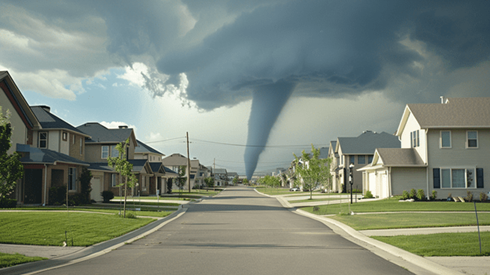Q1 2024 Natural Catastrophe Losses Manageable for Governments and Insurers

July 22, 2024

The financial cost of natural catastrophes for the first quarter of 2024 was manageable for federal governments and the insurance industry, Gallagher Re has reported.
In its Q1 2024 Natural Catastrophe and Climate Report, the company revealed that "the minimum $43 billion in economic loss from all natural perils [during the quarter] was 17 percent lower than the most recent 10-year Q1 average of $52 billion."
Gallagher Re expects a close focus on the expected quick transition from El Niño to La Niña conditions in the central and eastern Pacific Ocean as the year continues. "This could translate to above average activity during the upcoming Atlantic hurricane season and lead to other notable global weather or climate extremes," the company warns.
The report points out that "there is little correlation between the performance of catastrophe losses in the months of January, February, and March and how the rest of the calendar year would be expected to play out."
The United States, which is the insurance industry's most active global market for filed claims, Gallagher Re says, "becomes a particular point of focus for severe convective storm activity, drought, and later for potential landfalling hurricane events. Europe and Asia also enter peak months for possible large-scale weather/climate disasters."
Ample reinsurance market capital has the industry well positioned to navigate an active hurricane season, the company says, although "La Niña can also bring further weather extremes around the world. 2024 is currently projected to be one of the top three warmest years on record."
Economic Loss
The total economic loss for Q1 2024 was preliminarily estimated at $43 billion. The most expensive individual event occurred on January 1, 2024, when a 7.5 magnitude earthquake struck Japan's Noto Peninsula, causing "a tentatively estimated $12 billion in direct economic losses, [accounting for] 28 percent of the global Q1 total," the report states.
Ten additional weather/climate-related billion-dollar economic loss events were recorded during Q1 2024, Gallagher Re reports. "This included seven in the [United States] (three severe convective storms (SCS), three winter weather, and one flooding); two in South America (drought in Brazil and wildfires in Chile); and one in Asia (winter weather in China)."
The report continues as follows: "Despite an above-average volume of large hail reports (at least 2 inches or larger) in the [United States], overall SCS damage costs were lower than [during] the same period in 2023. As a reminder, 2023 started with lingering La Niña conditions, which aids in an earlier start to the SCS season, while 2024 started during strong El Niño conditions."
Losses attributed to global flooding were also mild compared to their decadal average, the report states. Winter weather and extratropical cyclone activity were manageable from a loss and damage perspective in Europe, North America, and Asia.
Insured Loss
"The preliminary view of insured losses during Q1 2024 showed a slightly higher than average total, but it was largely a manageable start to the year for the insurance industry," Gallagher Re reports, adding, "the minimum of $20 billion in payouts was above the decadal average of $18 billion."
Two events in the first quarter topped $3 billion in insured losses, the report states: "A US SCS outbreak (March 12–17) and the January 1 Japan earthquake. Both estimates remained tentative. The Japan estimate was subject to further revision as claim filings and payouts after the April 1 renewal period may require another adjustment to the initial estimate."
July 22, 2024
